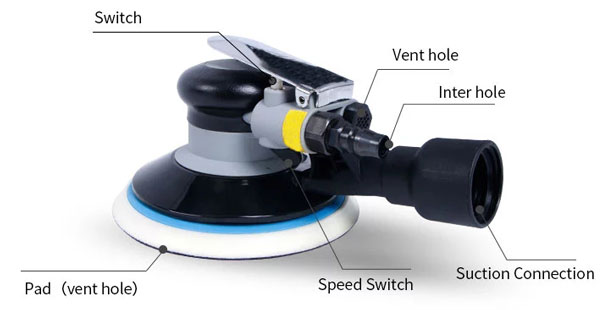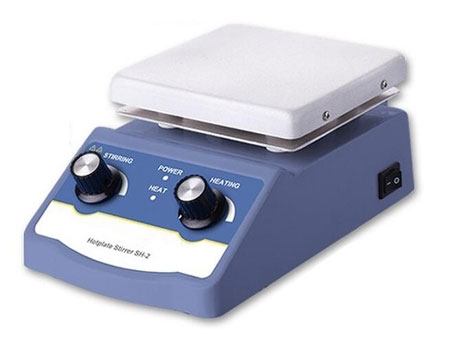The thyristor power controller adopts thyristor (SCR or TRIAC) as the switching component, namely, a non-contact switch that can quickly and accurately control the closing time. It serves as an essential terminal equipment for power control designed for high precision and high dynamic indicators. It is worth noting that different loads and constraints of the operation environment determine different control modes and require various supporting equipment. Among control modes there are phase angle control, distributed crossover and time proportional zero crossover. In actual use, SCR power controllers can be sorted into single-phase SCR power controllers and three-phase SCR power controllers in accordance with their load types, power supply types and power supply voltage levels. So, how should we choose the right type of power controller and bring its optimum performance into play with minimal damage? The following passages will give you the answer.
Tag: how to
According to the relevant data and practice, the repeatability of the tool setting probe is 1 um, and that of the chuck less than 15 inches is 5 um. The repeated accuracy of the tool arm can reach 8um for the chuck of 18 inches and above. This precision can meet the needs of most users without trial cutting. The use of tool setting instrument reduces the auxiliary time of the machine tool and reduces the rework and scrap rate. The efficiency and accuracy of the machine tool can be significantly improved when the machine tool is used from the beginning to the end.
Digital oscilloscope is an indispensable tool for the design, manufacture and maintenance of electronic equipment. With the rapid development of technology and market demand, engineers need the best tools to quickly and accurately solve the measurement challenges. As the eyes of engineers, digital oscilloscope is very important to meet the current difficult measurement challenges. Because of the unique advantages of waveform trigger, storage, display, measurement, waveform data analysis and processing, digital oscilloscope is widely used. Due to the large performance difference between digital oscilloscope and analog oscilloscope, if used improperly, it will produce large measurement error, thus affecting the test task.
A current transformer is an instrument that converts a large current on the primary side into a small current on the secondary side based on the principle of electromagnetic induction. The current transformer is composed of a closed core and windings. Its primary winding has a few turns and is stringed in the line of the current that needs to be measured. This article will introduce the principles and precautions that should be paid attention to in the actual application of current transformers.
The blower is mainly composed of the following six parts: motor, air filter, blower body, air chamber, base, drip nozzle. The blower operates eccentrically on the rotor offset in the cylinder, and changes the volume between the blades in the rotor slot to suck in, compress, and discharge air. The pressure difference of the blower is used to automatically send lubrication to the drip nozzle, and drip into the cylinder to reduce friction and noise, while keeping the gas in the cylinder from returning. This type of blower is also called a sliding vane blower. This article will talk about the use of blowers.In order to ensure personal safety, the operator must be familiar with this regulation before starting, and operate the blower strictly in accordance with this regulation.
Conductivity meter is an instrument and equipment suitable for precise measurement of various liquid media, mainly used to accurately measure the conductivity of liquid media. When equipped with electrodes with corresponding constants, the conductivity of high-purity water can be accurately measured. At present, it is widely used in scientific research and production in various fields. This article aims to tell you how to use the conductivity meter.
The hot knife cutter's blade is a metal strip that melts the woven sleeve when heated to a high enough temperature. This not only reduces the length required when the woven sleeve is melted, but also fuses the cut to prevent loss due to loose yarn during installation and use.
The sander is mainly for some surface unevenness and smoothness, usually used in the field of decoration, jade, handicrafts, hardware, electronics, stone, wood, etc., the main uneven surface grinding flat can be.

Magnetic stirrers are usually used in food, biopharmaceutical and other fields. As biopharmaceuticals put forward higher requirements for the sterility and risk control of the agitator shaft seal, industrial magnetic agitators came into being in Sweden in the 1980s. Magnetic stirrers have become the mainstream of the market, and continue to develop in the direction of simplicity, high torque, high shear force or very low shear force, safe bearing materials, easy online cleaning, and online sterilization. For example, a magnetic stirrer for bioreactors, a magnetic stirrer for high-shear homogenization, etc. Whether it can prove that the agitator can be cleaned and sterilized online, and the bearing material safety has become the gold standard before the selection of biopharmaceutical agitators.

In the daily use of handheld inkjet printer are encountered in the process of some problems. Generally speaking, the working principle of online inkjet printers is more complex, and when a failure occurs, you usually need to contact the inkjet printer manufacturer's staff to guide the maintenance. While the working principle of handheld inkjet printers is relatively simple, as long as know the common processing methods, the fault can be easily resolved, and ATO's editor will explain it to you below.
Before the dryer enters normal work, there will be a period of adaptation (run-in period, generally 3 days). This period is to ensure that the dryer can work normally during the formal production process and minimize the number of dryers. The probability of an accident, the correct operation during the adaptation period can prolong the service life of the dryer, so we must pay attention to the details of each operation during this period.
Handheld inkjet printer as a popular small, portable coding equipment, can be easily on all kinds of products, large can not move the equipment on the flexible positioning of the assignment code. Can complete all kinds of common Chinese, English, digital, serial numbers, icons, LOGO, variable information, two-dimensional codes, bar codes and other forms of identification. ATO as one of the handheld printer equipment suppliers, provide a series of pre-sales and after-sales service programs. Now, let's take a look at the specific content of the handheld inkjet printer operating guide.
A vacuum pump is a device or equipment that uses mechanical, physical, chemical or physical chemical methods to pump the pumped container to obtain a vacuum. In layman's terms, a vacuum pump is a device that improves, generates and maintains vacuum in an enclosed space by various methods. How to choose the right vacuum pump? This article will list nine aspects for your reference.
Daily maintenance - after each use of Electric Pressure Washer
1. Flush the hoses and filters connected to the detergent to remove all detergent residues to help prevent corrosion.
2. Turn off the water supply connected to the electric pressure washer.
3. Release all pressure from the hose by pulling the trigger on the servo gun lever.
4. Remove the rubber hose and pressure hose from the electric pressure washer.
5. Turn the electric source switch to the "on" and "off" positions four to five times for 1-3 seconds each to remove water from the pump. This procedure helps protect the pump from damage.
The portable refractometer is used to continuously measure the refractive index of the medium during the process. It can mainly measure the temperature and density of medium, including salinity, milk, brix, alcohol, antifreeze, coolant, wine and honey, and also can be used for beer brewing. The handheld refractmeter also named as brix refractometer, is applied in food industry, breeding industry, auto repair industry and many other fields.
UV spectrophotometer is a commonly used photometer product. With it, light of different wavelengths can be arbitrarily selected in the ultraviolet-visible region. The instrument has the advantages of stable performance, flexible use, high reliability, and easy maintenance. The UV spectrophotometer needs to be calibrated when in use. The following is the calibration method of the UV spectrophotometer.
As one of the most common types of relays, timer relay plays a very important role in the electrical control system. The principle is to complete the control of the line by keeping the input signal for a certain period of time-that is, "delay effect", and then continue to execute the command of the input model. When choosing a timer relay, the most important factors to consider are the delay range, delay type, delay accuracy and working conditions. For sure, some basic factors will not be ignored, such as the selection of rated operating voltage and rated operating current.
For vibration motors, burning down is a common fault. So why does the vibration motor burn down? How to prevent it? This article will introduce the specific reasons and preventive measures for this, from the 6 points of anchor bolts loosening, installation, eccentric block adjustment, sealing of the protective cover, ambient temperature and heat dissipation.
1. When testing, it is necessary to pay attention to the metal magnetic properties and surface roughness of the standard plate should be similar to the test piece.
2. When measuring with ultrasonic thickness tester, the probe of the ultrasonic thickness gauge must be perpendicular to the surface of the sample.
3. When measuring, pay attention to the critical thickness of the base metal. If it is greater than the critical thickness, the measurement is not affected by the thickness of the base metal.
4. When measuring, pay attention to the influence of the curvature of the test piece on the measurement. Therefore, it is not reliable to measure on the curved surface of the test piece.
5. Before measuring, you need to pay attention to whether other electrical equipment around will generate magnetic field. Because if a magnetic field is generated, it will interfere with the magnetic thickness measurement method.
The digital clamp meter is a meter used to measure the current of the running electrical circuit. With this instrument, the current can be measured under uninterrupted power conditions. It can be used to measure AC and DC voltage, AC current, resistance, capacitance, diode forward voltage drop, circuit continuity, frequency and duty cycle. The greatest convenience of measuring AC current is that only one wire to be measured is placed in the intersection. Moreover, the measured AC current frequency range can be as wide as 1 kHz. The display of ATO clamp meter is equipped with background light, which is convenient for working under the condition of low light.

